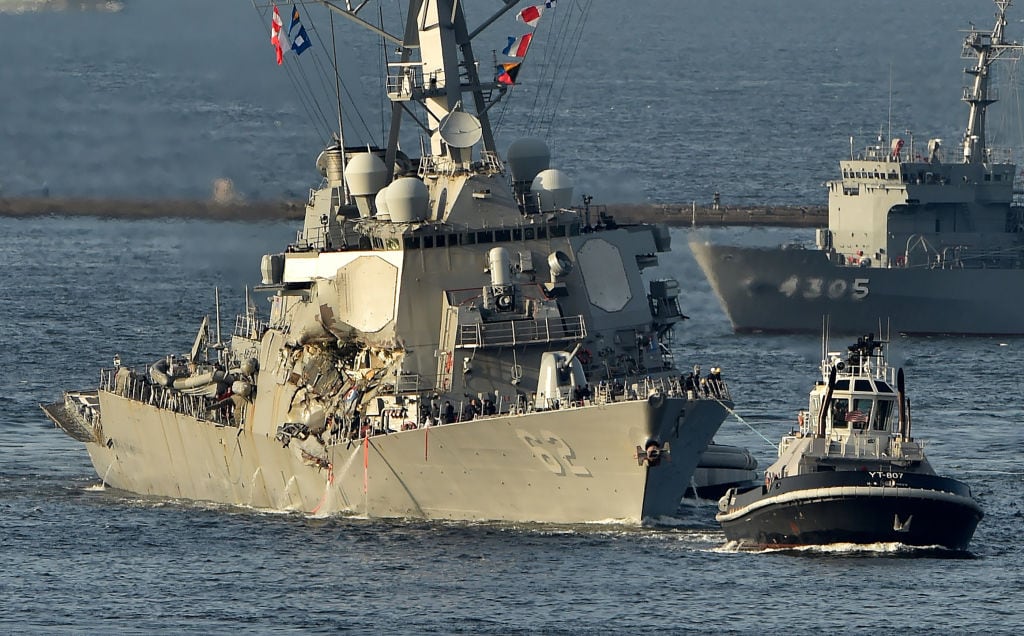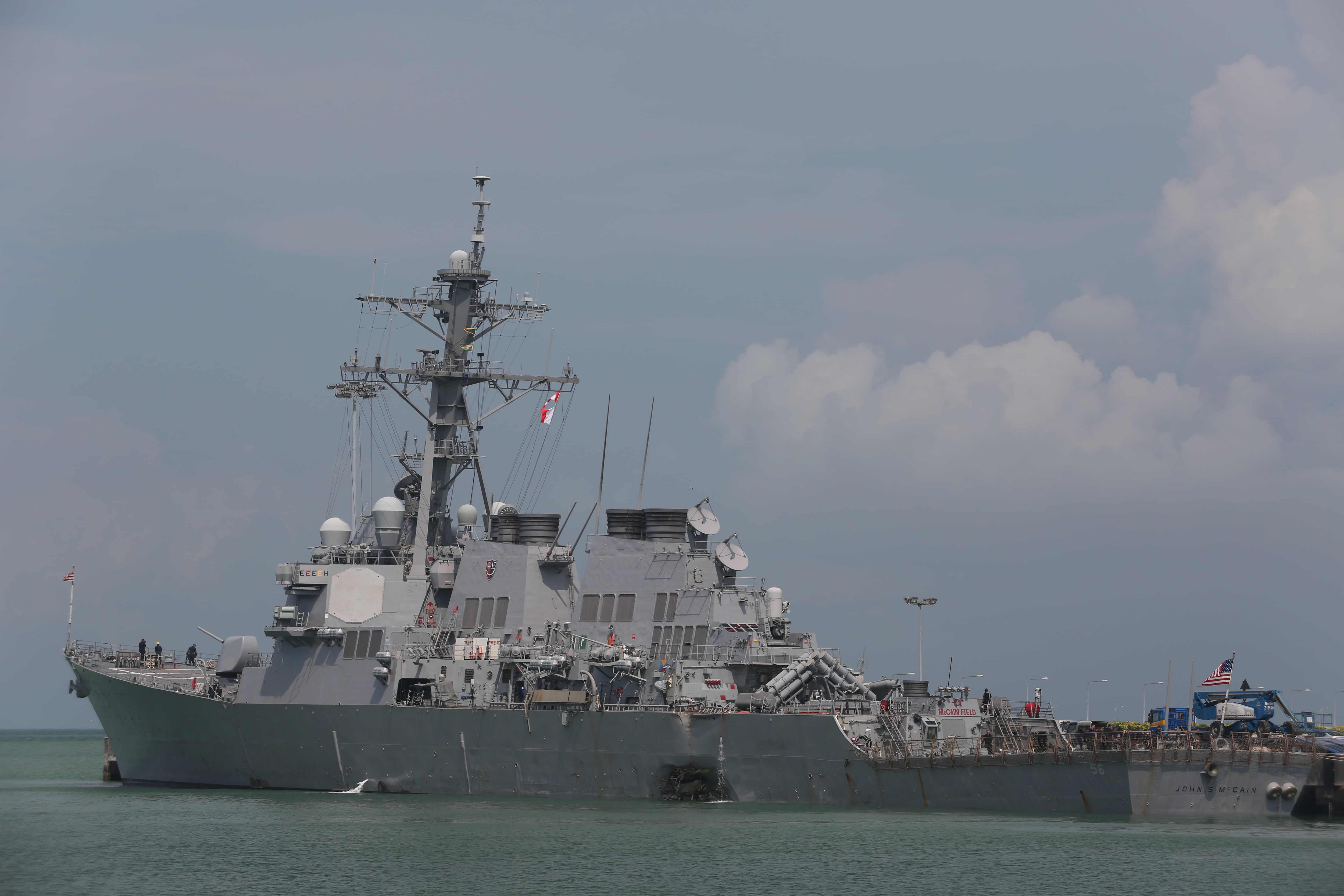The cruiser Lake Champlain’s May collision with a South Korean fishing vessel did not result in the extensive damage or loss of life that followed other collisions this year in the West Pacific waters of the 7th Fleet command.
But like the disasters involving the destroyers Fitzgerald and John S. McCain that killed 17 sailors this summer, a Navy report on the Lake Champlain released Wednesday found yet another failure of basic operations.
“The LAKE CHAMPLAIN crew was ultimately unprepared for the situation in which they found themselves through a lack of preparation, ineffective command and control, and deficiencies in training,” the report states.
RELATED

The report also notes the radio and GPS on the Korean Nam Yang 502 were not functional at the time of the crash, which contributed to the collision.
The Lake Champlain was deployed with the carrier Carl Vinson on the morning of May 9, east of the Korean peninsula.
Capt. Chris Cegielski, the commanding officer, was taking meetings on the carrier and was not on board at the time of the collision.
The cruiser’s commercial radar display on the bridge was not working that morning, but was able to track the Korean vessel by 11 a.m.
But just after 11:30 a.m., Lake Champlain lost track of the ship, even as it neared, according to the report.
While changing course to keep with the escorted carrier, the cruiser turned in front of the Nam Yang without realizing the risk of collision, the report states.
“The bridge watch team was slow to react and executed improper and untimely maneuvers in an attempt to avoid collision,” according to the report.
A few minutes before impact, the cruiser twice tried to contact the fishing vessel’s bridge to no avail.
The Nam Yang did not respond to the cruiser’s radio hails, use its whistle or take any steps to avoid the collision, the report states.
Nam Yang’s bow hit the Lake Champlain on is center-left side, and then scraped down the side of the cruiser’s hull.
RELATED

The Lake Champlain sustained a three-foot by five-foot dent from the collision and stayed on scene to ensure the safety of the Nam Yang’s crew afterward, according to the report.
“For nearly an hour, LAKE CHAMPLAIN’s interpreter was unsuccessful in establishing communications with NAM YANG 502 via bridge-to-bridge radio,” the report states.
The report also states that the cruiser’s officers did not know enough about international rules of the road, and that the bridge team was inexperienced and had neither discussed nor trained for such a scenario.
“Watch team members were not familiar with basic radar fundamentals, impeding effective use,” the report states. “LAKE CHAMPLAIN did not hold radar track on NAM YANG 502 for sixteen minutes leading up to the collision, and it is possible that proper radar tuning would have prevented this problem.”
A failure to employ lookouts properly on the ship is also mentioned in the report, as well as neglecting several basic navigational tools on the bridge.
The Navy denied a Navy Times Freedom of Information request for the Lake Champlain investigation.
After being asked by Navy Times at a press conference earlier this month why no report was being issued, Chief of Naval Operations Adm. John Richardson pledged to make a copy public.
Along with the Fitz, McCain and Lake Champlain collisions, the cruiser Antietam ran aground in the Tokyo Bay in January, causing millions in damage and resulting in a fuel spill.
Geoff is the managing editor of Military Times, but he still loves writing stories. He covered Iraq and Afghanistan extensively and was a reporter at the Chicago Tribune. He welcomes any and all kinds of tips at geoffz@militarytimes.com.




